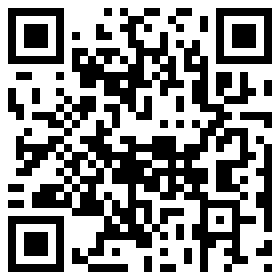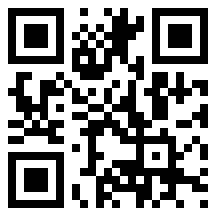This posting encapsulates, but in May 2021 updates, my remarks at a colloquium entitled:
Global and local visions: Evolving communities of practice
Panelists: Vance Stevens, Suresh Canagarajah, Jane Hoelker, Yuko Goto-Butler, Takako Nishino, Perin Jusara, Golge Seferoglu, and Toni Hull, presented March 27 at the annual international in TESOL conference in Denver (Stevens, 2020)

I finished my talk by asking which construct of knowledge distribution was more productive, communities or networks? I answered rhetorically that perhaps this was a matter of scale, where networks can handle an almost infinite number of participants. The evolution of Webheads is instructive. Seen as a community, members interact within the domain of practice. Networks imply more widespread, perhaps opportunistic, contacts, with looser characterization of domains and practices. So which is more productive? Given the spontaneous and voluntary nature of such constructs, the answer is ‘whatever works’ and therefore probably moot.
The abstract for the colloquium was:
Whether learning or teaching English in the EFL context, the model of Communities of Practice moves individuals and groups forward in their development. Examples of shared practices implemented in elementary, secondary and tertiary institutions as well as in programs of teacher professional development conducted on worldwide communication networks are discussed.
My contribution was entitled
"The Webheads and Distributed Communities of Practice"
Abstract for my presentation:
In these times of globalization and worldwide communication networks, distributed communities of practice (e.g. any CoP that cannot rely on face-to-face meetings and interactions as its primary vehicle for connecting members) are becoming more common. The concept of distributed CoPs has been addressed by Etienne Wenger. This presentation discusses CoPs implemented for educational technology specialists, many particularly concerned with language learning, in ongoing teacher professional development, foremost through Webheads in Action and in various other communities and offshoots from these, such as TESOL-sponsored EVO (Electronic Village Online). How Wenger’s concept of CoPs has evolved after his encounter with the Webheads online will also be discussed.
In my talk I didn’t rehash a definition of communities of practice except to mention that they are most frequently understood, as defined by Etienne Wenger, to:
- promote knowledge of a domain
- revolve around a practice
- form spontaneously, voluntarily, in communities
- Wenger, E. (1998). Communities of practice Learning as a social system. Retrieved May 12, 2021, from https://thesystemsthinker.com/communities-of-practice-learning-as-a-social-system/
- Wenger, E. & Wenger-Trayner, B. (2015). Communities of practice: A brief introduction. Retrieved May 12, 2021 from https://wenger-trayner.com/introduction-to-communities-of-practice/
- here https://webheadsinaction.wordpress.com/2009/04/07/looking-ahead-to-wiaoc2009/
- and https://webheadsinaction.wordpress.com/2009/05/26/all-over-but-the-shouting/
- and in related posts at the bottom of those pages
The question I addressed in my talk was, is Webheads a group, a community, or a network? In formulating my arguments I made a distinction between groups, communities, communities of practice, and networks, as illustrated on the diagrams in slides 6 through 10 in my slide show: http://www.slideshare.net/vances/the-webheads-and-distributed-communities-of-practice
(To see these effectively, go directly to https://www.slideshare.net/vances/the-webheads-and-distributed-communities-of-practice/6 in the slide show above and then scroll through to https://www.slideshare.net/vances/the-webheads-and-distributed-communities-of-practice/10)
Groups
A group is a gathering of people. It could be a mob or a friendly gathering at a pub. The impetus for its formation is chance or convenience; e.g. people walking near one another in a park, people who come together to observe a sporting event, or students who are grouped in furtherance of class logistics.
Downes makes further distinctions in a presentation anticipating my progression here of configurations from groups --> communities --> communities of practice --> and then to networks.

From Stephen Downes’s slide show “Groups vs Networks: The Class Struggle Continues” at https://www.downes.ca/presentation/53
(This is an image; the buttons are not clickable here, though clicking will enlarge the image)
(This is an image; the buttons are not clickable here, though clicking will enlarge the image)
The slide cites his posting “Sudden Thoughts And Second Thoughts” from Stephen’s Web, September 21, 2006, http://www.downes.ca/cgi-bin/page.cgi?post=35839, where these points are contextualized.
Downes's slide show covers each of these dichotomies in more detail.
Communities
Communities have more cohesion and permanence than groups. A community could form around a place where people live, or other groupings might consider themselves communities as they develop social bonds and identity to distinguish themselves from groups.
When Webheads in Action was started in 2002 it coalesced around a Yahoo Group. As people started to join the group they identified themselves as such until they started taking on characteristics that made them think of themselves more as a community than a mere group of teachers.
What would some of these characteristics be?
- Photographs and voice/webcam communications enable group members to see the human behind the text message and enhance bonds leading to a sense of community
- Not only helping one another’s practice by answering each other’s questions, but also showing evidence of caring, such as interest in personal vignettes, individual accomplishments and setbacks
- Developing and defining a group culture through various forms and modalities of communications
Shortly after its formation as an EVO session in 2002, participants in Webheads in Action were exploring their interactions and sense of cohesion in the framework of communities of practice, leading to two subsequent presentations at the 2003 TESOL conference examining the community in that light
- EVOnline workshop: Reflection through experience and experiment with a communities of practice online: http://vancestevens.com/papers/tesol/baltimore2003/copractice.html#workshop
- Colloquium: "Case study of a community of practice": http://vancestevens.com/papers/tesol/baltimore2003/copractice.html#colloquium
Meanwhile Etienne Wenger agreed to be a keynote speaker at our 2007 WiAOC (Webheads in Action Online Convergence http://vancestevens.com/papers/evonline2002/wiaoc2007keynotes.htm). His keynote took the form of a conversation moderated by Susanne Nyrop. When Cristina Costa entered the conversation, Etienne asked her when she felt that she was a member of a CoP. Cristina replied that she realized this when her practice began to change.
Etienne referred back to this later when, during the question period, I asked him whether his concept of CoPs had evolved after his encounter with the Webheads online. He said indeed it had. He said that the fact that Webheads met in so many spaces while clearly being a CoP was a revelation to him. He now realized he could relax his previous thinking on constraints on SPACE occupied by a distributed CoP. We took this to mean that since Wenger's own thinking on CoPs was in flux, and he was thinking of us as an example of a CoP, this might have nudged us over that 9th hurdle.
Networks
Meanwhile I’ve moved in my own thinking beyond the CoP model, following on the work of Stephen Downes (2001-2008) and George Siemens (many of whose writings on connectivism are cited in Downes, 2001-2008). Downes has written and presented much on the concept of diffusion of knowledge within distributed learning networks, and Siemens of course has long espoused the notion of connectivism, famously summarized as “The pipe is more important than the content within the pipe.” Siemens (2004). Here, Siemens means that it is more important to nurture a system of connections between knowledgeable people (the pipe) than to be concerned with what these knowledgeable people know (the content within the pipe) since this content can be directed to anyone with appropriate connections with the pipe.
Distributing knowledge is what communities and networks are all about. Downes has a simple illustration of what it means to ‘know’: Where’s Waldo? Once you know where Waldo is, you can’t not know.
But these days it seems, there is too much information available, and it seems we need increasingly to get our minds around more of it in order to keep up with and ‘know’ how to perform competently in our work.
Wenger et al. (2002:6) promotes the CoP model as an anecdote to the fact, as he puts it, that “increasing complexity of knowledge requires greater … collaboration; whereas … the half life of knowledge is getting shorter.” Dave Cormier (2008) suggests a rhizomatic model of learning to deal with increasingly rapid obsolescence of knowledge. In this model, knowledge is seen as springing up wherever the tendrils, given its rhizomatic nature, are able to reach.
Downes often expresses himself in analogies, and one oft repeated is that no one knows how to get a plane from London to Paris. Engineers must design the plane, someone has to build it, pilots are trained to fly it, but they in turn need an infrastructure of crew working in the plane as crew and outside as mechanics, and all those who work in airports and weather and navigation, etc. No one can actually on his or her own take a plane full of passengers from one place to another; this requires a network and all the knowledge within that network.
What these notions, theories if you will, suggest is that connection with others in a network is of prime importance in having access to a repository of knowledge.
On a personal level we experience this when we turn to Google or Wikipedia to answer in minutes if not seconds a question that in the past might have sent us to a library, but more often than not would have remained unanswered due to the logistics involved.
Of even greater importance in this day and age, another available resource is direct (and indirect) contact with many people in one’s network, each possessing a reservoir of knowledge which contributes to the entire pool of knowledge residing in the network. This can be accessed through listservs or sometimes almost instantaneously through Twitter or RSS feeds, or instant messaging. Thus the knowledge possessed by any individual, or node, in the network, is the sum total of all aggregated knowledge within that network. It is to this that we ascribe the incredible power inherent in distributed learning networks which often comprise to some extent communities of practice. (Downes, 2005; Siemens, 2006)
I conceive CoPs as bubbles overlapping in a Venn diagram. The total of all the bubbles would be the network as conceived in connectivist terms. The CoPs are themselves important to sharing of information within a community, but the fact that nodes within the CoP are connected with nodes outside the CoP in essence brings infinitely more knowledge into the community. I think it is something along these lines that Wenger is trying to accommodate in re-envisaging the notion of space in which distributed communities of practice work.
This has tremendous implications for professional development.
Just before we held our colloquium in 2009 in Denver, Jack Richards delivered a video plenary address at a distance at a plenary in which he touched on what teachers need to know in order to practice effectively. He said research indicates that teachers often tend to revert to traditional methods rather than activate what they are exposed to in training curricula. Derick Wenmoth (also from NZ) mentioned similar research findings in his keynote at the K-12 Online Conference in 2008:
Wenmoth (2008) implies that the key to success in keeping current is in expanding productive contacts within a network. One problem is that teacher-trainers without sufficient experience with technology and who are rooted in old-school methodologies are simply not modeling new age learning behaviors for the trainees.
The increasingly inadequate model of reliance on face-to-face exchange of knowledge is apparent in the way that many annual conferences are organized and structured. Many such gatherings do little to encourage connectivity for either presenters or participants.
There was just recently a very interesting online conference, AACE's Spaces of Interaction: (perhaps here, https://www.aace.org/review/getting-ready-for-ed-media-2009/), which suggested that face to face conferences were falling ‘unacceptably’ short on utilizing networking potentials for participants.
This was acceptable in the past because participants who relied on having the opportunity to touch base with each other once a year traditionally might have only been able to exchange letters or emails during the intervening months between conferences. But the new dynamic suggests that connectivity where contacts only meet face to face falls far short of interacting with them in online environments as well.
Fortunately there are many venues for doing just that, and for many practitioners these are taking on greater importance in professional development than interaction in face to face environments. At the very least, one could say that interaction in online spaces facilitates greater productivity when the interactants eventually do meet face to face.
The bottom line is that it does not hurt and most likely maximizes productivity to interact with colleagues as frequently as possible in online spaces, and this is where distributed communities of practice interacting with each other through greater networks is key to practitioners’ keeping current and confident in their level of competency at work.
Some means for keeping current (at the time this was originally written) were participation in:
- Social networks: Ning, TappedIn, EVO, WiAOC
- Social bookmarking: Delicious, Diigo
- Groups: YahooGroups and GoogleGroups
- Microblogging: Twitter, Plurk
- Instant messaging: Yahoo Messenger, Skype
- Blogging and podcasting: keeping currect via RSS
- Wikis: PBWiki, Wikispaces
- Aggregation: Pageflakes, Netvibes, Protopages \\
An example PLN diagram from Jane Hart (2009), Slide 25 here:
https://www.slideshare.net/janehart/ilta-keynote/24-ExamplePLEPLN_Social_Social_File_networking
https://www.slideshare.net/janehart/ilta-keynote/24-ExamplePLEPLN_Social_Social_File_networking
References
Cormier, D. (2008). Rhizomatic Education: Community as Curriculum. This paper in another one for the lost and found. When Innovate: Journal of Online Education went 'out of print' Dave moved it to his blog: http://davecormier.com/edblog/2008/06/03/rhizomatic-education-community-as-curriculum/. If can also be found on Research Gate with forthright coda regarding what Graham Davies used to call 'link rot': https://www.researchgate.net/publication/234577448_Rhizomatic_Education_Community_as_Curriculum (both articles retrieved as indicated on May 11, 2021).
Downes, S. 2001-2008. E-learning 2.0. eLearn Magazine, retrieved May 11, 2021 from https://elearnmag.acm.org/featured.cfm?aid=1104968
Downes, S. (2005). An Introduction to Connective Knowledge. Stephen’s Web, http://www.downes.ca/cgi-bin/page.cgi?post=33034 Johnson, C. 2005. Establishing an Online Community of Practice for Instructors of English as a Foreign Language. Doctoral dissertation. Nova Southeastern University. Retrieved from NSUWorks, Graduate School of Computer and Information (614). Sciences. https://nsuworks.nova.edu/gscis_etd/614. Retrieved May 10, 2021
Siemens, G. (2004). Connectivism: A Learning Theory for the Digital Age. This paper disappeared temporarily when Elearnspace did, but it is easily found on online. Here's a version with a 2005 update of an accompanying website, https://www.academia.edu/2857071/Connectivism, retrieved May 11, 2021. You can use ctrl-F to find the 'pipes' quote; to hard to track in-text as the papers move about).
Siemens, G. (2006). Knowing Knowledge. Ebook available via Creative Commons license, but no longer on eLearnspace. On May 11, 2021, you can try here, https://amysmooc.files.wordpress.com/2013/01/knowingknowledge_lowres-1.pdf, or the Internet Archive, https://archive.org/details/KnowingKnowledge/page/n127/mode/2up
Stevens, V. (2009). Modeling Social Media in Groups, Communities, and Networks. TESL-EJ, 13(3). http://www.tesl-ej.org/wordpress/past-issues/volume13/ej51/ej51int/
It received positive feedback from Russell Stannard who commented
Stevens, V. (2010). Webheads and Distributed Communities of Practice. In Canagarajah, S., Stevens, V., Nishino, T., & Hoelker, J. (EFLIS Academic Session 2010). Global and Local Perspectives: Evolving Communities of Practice in EFL. EFLIS News, 9(1). https://www.tesol.org/news-landing-page/2011/11/08/eflis-news-volume-9-1-(march-2010)
Update:
This article was updated at the invitation of Jane Hoelker on behalf of the editors of the EFL IS Newsletter, who published a summary of the EFL Academic Session from Denver TESOL 2009. The article is at this link (on May 11, 2021) https://www.tesol.org/news-landing-page/2011/11/08/eflis-news-volume-9-1-(march-2010), though the bookmark to "Articles: EFLIS Academic Session 2009. Global and Local Perspectives: Evolving Communities of Practice in EFL" does not work.
My part of the article (October 2009) resides online at http://tinyurl.com/vance2009denver
Wenger, E. Richard McDermott, R., & Snyder, W.M.. (2002). Cultivating communities of practice. Boston: Harvard Business School Press. 284 pages.
Wenmoth, Derek. (2008). Holding a Mirror to our Professional Practice. Keynote address given at the K12 Online Conference 2008, http://k12onlineconference.org/?p=181
Further update May 11, 2021 - links checked and updated as indicated



 Tag in your DEL.ICIO.US account
Tag in your DEL.ICIO.US account











3 comments:
Excellent post... I'm familiar with some of the work you cited, but by no means all of it. I've just put up a link to this on my own blog, hope you don't mind...
http://teacherdevelopment.tumblr.com/post/93391351/advanceducation
After reading the posting and viewing the slide show - I think I would like to add one more point: the acceptability of the in and out nature of the CoP. You are not either in or out, so to speak. You are there when you can and want to be and gone but not forgotten when other demands lead you elsewhere. Fluidity among members yet with a solid core of principles and, perhaps, folks, are integral to the CoP.
Laine
Thanks Laine for the comments and Darren for the post at http://teacherdevelopment.tumblr.com/post/93391351/advanceducation.
I just came on some interesting commentary by Stephen Downes on the communitities / networks dichotomy here: http://www.downes.ca/post/55510. The commentary refers to an article entitled Promoting and assessing value creation in communities and networks: a conceptual framework
Etienne Wenger, Beverly Trayner and Maarten de Laat, Open Universiteit (2011), http://www.social-learning-strategies.com/documents/Wenger_Trayner_DeLaat_Value_creation.pdf.
Downes draws these two quotes from the article: "The community aspect refers to the development of a shared identity around a topic or set of challenges." And "the danger of network is noise and diffusion.... the challenge of network is that it requires a strong sense of direction on the part of individuals."
Yes, and many more insights in this insightful work, including yet another concise and quotable definition of a CoP as "a learning partnership among people who find it useful to learn from and with each other about a particular domain."
Post a Comment